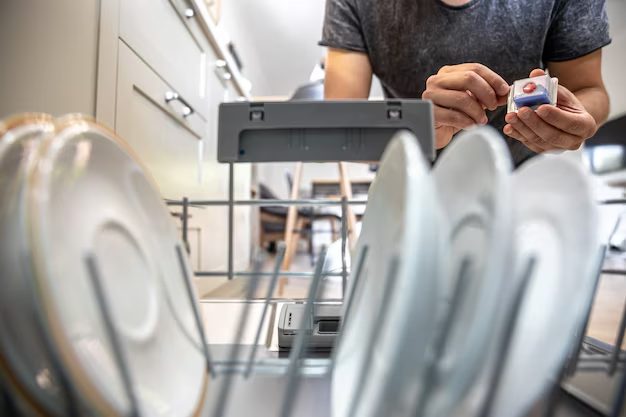How to Easily Replace Your Refrigerator Door Seal for Better Efficiency
Is your refrigerator leaking cold air, causing your energy bills to skyrocket and your food to spoil faster? Replacing your refrigerator door seal may be the simple solution you need. By ensuring a snug fit, you can improve energy efficiency and extend the life of your food. In this guide, we'll walk you through the process of changing your refrigerator door seal step by step, exploring key considerations, related subtopics, and common pitfalls to avoid. Whether you're a seasoned DIYer or a complete novice, this comprehensive guide will equip you with all the information you need to tackle this task confidently.
Why Change Your Refrigerator Door Seal?
Understanding the Importance
Refrigerator door seals, also known as gaskets, play an essential role in maintaining the appliance's efficiency. When functioning correctly, they keep cold air in and warm air out, preventing spoilage and ensuring the contents remain at a consistent temperature. However, over time, seals can become brittle or damaged, leading to air leaks.
Common Signs You Need a New Seal
Before diving into the replacement process, it’s crucial to identify whether or not your seal is the problem. Here are a few common indicators:
- The Refrigerator Isn’t Cooling Properly: If your fridge isn't as cold as it should be, a faulty seal could be the culprit.
- Increased Energy Bills: A sudden spike in energy consumption might suggest your fridge is overworking to maintain its temperature.
- Visible Damage or Mold: Cracks, tears, or mold on the seal indicate it's time for a replacement.
- The Dollar Bill Test: Close the refrigerator door over a dollar bill. If it slides out easily, the seal needs replacing.
Tools and Materials You'll Need
Before you begin, gather the necessary tools and materials for a seamless project.
- Replacement Door Seal: Ensure it matches your refrigerator model.
- Screwdriver: Typically, a flathead or Phillips is needed.
- Soapy Water: A mild dish soap solution to clean the gasket groove.
- Towel or Old Cloth: For cleaning and drying the surface.
- Hair Dryer: To soften the new seal, aiding installation.
Step-by-Step Guide to Replacing the Refrigerator Door Seal
Step 1: Preparation
- Unplug the Refrigerator: Safety first! Disconnect the fridge from the power source to avoid electric shock.
- Empty the Door Shelves: Remove items from the door to prevent them from falling during the process.
- Inspect the Current Seal: Take note of the attachment style, whether screws, snaps, or adhesive.
Step 2: Remove the Old Seal
- Loosen the Fasteners: If your seal is screwed in, slightly loosen (but do not remove) the screws. If it snaps, gently pry it from the grooves.
- Peel Away the Seal: Carefully pull the seal from the door, working your way around the perimeter.
- Clean the Area: Use the soapy water and towel to clean the gasket groove thoroughly, removing any debris or adhesive residue.
Step 3: Install the New Seal
- Warm the New Seal: Use a hairdryer to warm the new seal slightly. This makes it more pliable and easier to install.
- Position the Seal: Start at one corner, pressing the new seal into place. Make sure each section is snug before moving to the next.
- Tighten the Screws/Check the Fit: If screws are involved, gradually tighten them. For snap-type seals, ensure all parts are securely in place.
Step 4: Test the Seal
- Perform the Dollar Bill Test: Check the seal’s effectiveness by closing it over a dollar bill. A secure fit will make it difficult to pull out.
- Replug and Restock: Once satisfied, reconnect the appliance to power and replace door contents.
Practical Tips for a Successful Replacement
- Double-Check Compatibility: Always verify the new seal's compatibility with your appliance model.
- Be Gentle: Avoid using excessive force that could damage the new seal during installation.
- Monitor for Leaks: Pay attention to any unusual changes in fridge temperature or operation after installation.
Related Considerations and Maintenance
How to Maintain Your Refrigerator Seal
Proper maintenance can prolong the life of your new seal:
- Regular Cleaning: Wipe down seals weekly to prevent dirt and mold buildup.
- Avoid Slamming Doors: Gentle closures reduce wear and tear.
- Monitor for Wear: Periodically check for signs of damage or loosening.
When to Call a Professional
While replacing a door seal is manageable for most, some situations may necessitate professional help:
- Persistent Leaks: If the fridge continues to leak cold air, an underlying issue might require a technician’s insight.
- Unusual Noises or Performance: These could indicate problems beyond the seal, needing expert evaluation.
Key Takeaways for a Successful Seal Replacement 😊
- Identifying the Problem: Confirm if a faulty seal is causing inefficiencies.
- Gathering Tools: Have all materials ready for a smooth repair.
- Step-by-Step Replacement: Follow the guide to ensure an effective installation.
- Testing and Maintenance: Use tests to confirm success and maintain seals for longevity.
By following these steps and tips, you can efficiently replace your refrigerator door seal, saving energy and keeping your appliance running smoothly. Remember, while DIY projects can be rewarding, knowing when to seek professional help ensures your appliance remains in top condition. With a little care and attention, you'll maximize your refrigerator's efficiency in no time.
